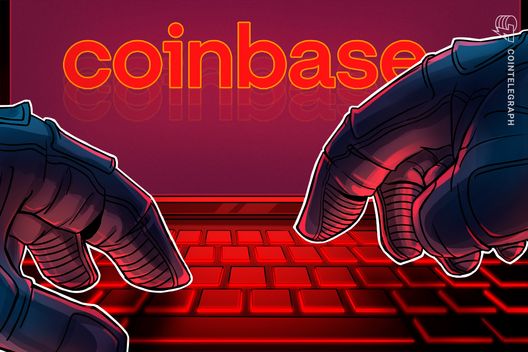
Bitcoin fiel am Sonntag innerhalb von weniger als 10 Minuten plötzlich um über 2 %, wobei Krypto-Investoren auf X auf die Handlungen eines sehr großen Bitcoin-Besitzers hinwiesen.

Finanzmittel Info + Krypto + Geld + Gold
Krypto minen, NFT minten, Gold schürfen und Geld drucken

Bitcoin fiel am Sonntag innerhalb von weniger als 10 Minuten plötzlich um über 2 %, wobei Krypto-Investoren auf X auf die Handlungen eines sehr großen Bitcoin-Besitzers hinwiesen.
Hyperliquid’s native token HYPE has climbed 21.7% so far in August, cementing its position among the best-performing large-cap cryptocurrencies.
At around $45, the token is just below its July all-time high of $49.75, while daily trading volumes continue to surge.
The question many investors are asking is whether this momentum can last, or if the rally risks losing steam as broader market conditions shift.
Unlike most altcoins that struggled during this month’s market pullback, HYPE has remained resilient.
While Bitcoin slipped back to $111,000 from a $117,000 peak after Jerome Powell hinted at possible rate cuts in September, Hyperliquid’s numbers kept growing.
Spot trading on the platform hit a record $3 billion in a single day, including $1.5 billion in Bitcoin alone, making it the second-largest venue for spot BTC trading across both centralised and decentralised exchanges.
At the same time, the exchange generated $93.5 million in fees and nearly $87 million in revenue this month, marking its strongest month on record.
These metrics highlight a platform that is not only attracting traders but also converting activity into substantial cash flow. This contrasts with rivals that often struggle to scale revenues despite surging volumes.
Hyperliquid’s rapid rise has also been fueled by its dominance in decentralised perpetuals, where it now controls close to 80% of the market.
On the broader decentralised exchanges category, Hyperliquid controls 18.4%, the largest market share, according to data from Coingecko.
At its peak, the platform processed as much as $30 billion in daily trades, a level that only a handful of decentralised exchanges have ever reached.
The exchange’s success comes from a combination of technical efficiency, including sub-second finality through its HyperBFT consensus, and a community-first approach with fee-sharing incentives for traders and developers.
The strategy has allowed Hyperliquid to eclipse established rivals such as dYdX, which saw its market share shrink from 30% at the start of 2024 to just 7% by year-end.
Today, Hyperliquid’s trading share has stabilised above 65% and at times touched 80%, cementing its position as the leading decentralised exchange for perpetuals.
The platform’s rise has not gone unnoticed. During a keynote at WebX Tokyo, BitMEX co-founder Arthur Hayes predicted HYPE could climb 126 times over the next three years if its fee revenue scales from $1.2 billion to more than $250 billion.
Watching @CryptoHayes predict HYPE pumping 126x in Tokyo.
Hyperliquid. pic.twitter.com/PL8xI0gcsB
— Alex Svanevik 🐧 (@ASvanevik) August 25, 2025
Markets reacted quickly, with HYPE’s price briefly spiking and trading volume surging more than 60% in 24 hours.
Still, Hayes himself admits his bold calls are only right about a quarter of the time. Analysts have also cautioned that Hyperliquid faces risks.
The platform relies heavily on sustained trading volumes, leaving it vulnerable to downturns in a prolonged bear market.
With only 16 validators, concerns around centralisation and transparency remain.
A lack of open-source code and reliance on a small team also expose it to execution risks.
For now, HYPE’s fundamentals appear strong enough to support its recent rally.
Its growing fee revenue, record spot volumes, and overwhelming market share in perpetual futures point to a platform that is executing with remarkable precision.
Valuation estimates from OAK Research put HYPE’s fair value between $32 and $49, suggesting it is trading near the higher end of conservative models but not wildly overstretched.
Whether the rally can extend depends on broader market conditions and Hyperliquid’s ability to manage its risks.
If on-chain trading continues to grow and the platform sustains its current pace of adoption, HYPE may well have room to climb higher.
The post Hyperliquid (HYPE) is up 21% in August, but can it sustain the rally? appeared first on CoinJournal.

Der Hacker von Radiant Capital und ein weiterer mutmaßlicher unbekannter Cyberkrimineller haben laut Lookonchain Transaktionen auf dem Markt getätigt.
Bitcoin’s downturn since the brief surge post Federal Reserve chair Jerome Powell’s speech at Jackson Hole on Friday has extended to below $111k.
The benchmark digital asset has slipped more than 3% to drop to lows of $110,956 across major exchanges, with BTC struggling as the bounce that followed Powell’s comments on cryptocurrency quickly fades.
Bitcoin’s dominance was also falling sharply, down to around 57%.
Analysts remain bullish, but could Bitcoin price drop below $110k and trigger further losses?
Cryptocurrencies spiked on Friday as risk assets exploded amid comments by Powell that the central bank could consider cutting rates sooner.
However, the brief rally that followed the Jackson Hole economic symposium has since swiftly unravelled, with Bitcoin plummeting to touch lows of $110k.
On Aug. 22, BTC saw an intraday peak of $117k – up from lows of $113k earlier in the day.
According to QCP, the downturn to current prices comes as an early whale offloaded a substantial $2.7 billion in BTC.
This rapid sell-off has accelerated a dip in BTC dominance, which hovers around 57%.
Asia Colour – 25 Aug 25
1/ $BTC’s post-Jackson Hole bounce didn’t last long, with a ~$2.7bn early-holder sale during thin Sunday liquidity sparking a flash crash that wiped out $500m in leveraged positions within minutes.
— QCP (@QCPgroup) August 25, 2025
Meanwhile, Bitcoin’s weakness has been evidenced by a dip in spot exchange-traded funds (ETFs) flows, with six consecutive sessions of outflows putting bulls under pressure.
Bitcoin’s long-term trajectory remains largely bullish, and a bounce to the all-time high above $124k is not an impossibility.
However, analysts at Glassnode are pointing to a short-term downside arc.
Particularly, all Bitcoin cohorts, with those in the 10- 100 BTC group biggest sellers, are in a distribution phase.
All $Bitcoin cohorts have now decisively moved into distribution, led by the 10–100 $BTC group. The uniformity across cohorts highlights broad sell-side pressure emerging in the market. pic.twitter.com/zVZkaPN2Tf
— glassnode (@glassnode) August 25, 2025
Increased selling could be bad news for bulls as a breakdown below $110k could ensue.
But despite this outlook, analysts at QCP Group maintain that Bitcoin is bullish.
The analysts say that despite the current sell-off, buyers can easily absorb the pressure as happened in July.
With BTC dominance slipping, it is Ethereum that may benefit, the analysts said.
“BTC dominance slipped from 60% to 57%. Still above the sub-50% levels of 2021, but enough to fuel speculation that whales expect $ETH to outperform, especially if ETH staking ETFs secure approval later this year,” QCP noted.
Bitcoin price currently hovers around $111,200, bouncing off lows last seen in early July. Investors will be watching that $110k level as well as broader market conditions.
The post Bitcoin drops to $111K as post-Jackson Hole bounce fades appeared first on CoinJournal.

Durov sagte, dass die französischen Strafverfolgungsbehörden auch ein Jahr nach seiner Verhaftung im Jahr 2024 noch immer „Schwierigkeiten“ haben, Beweise für ein Fehlverhalten zu finden.